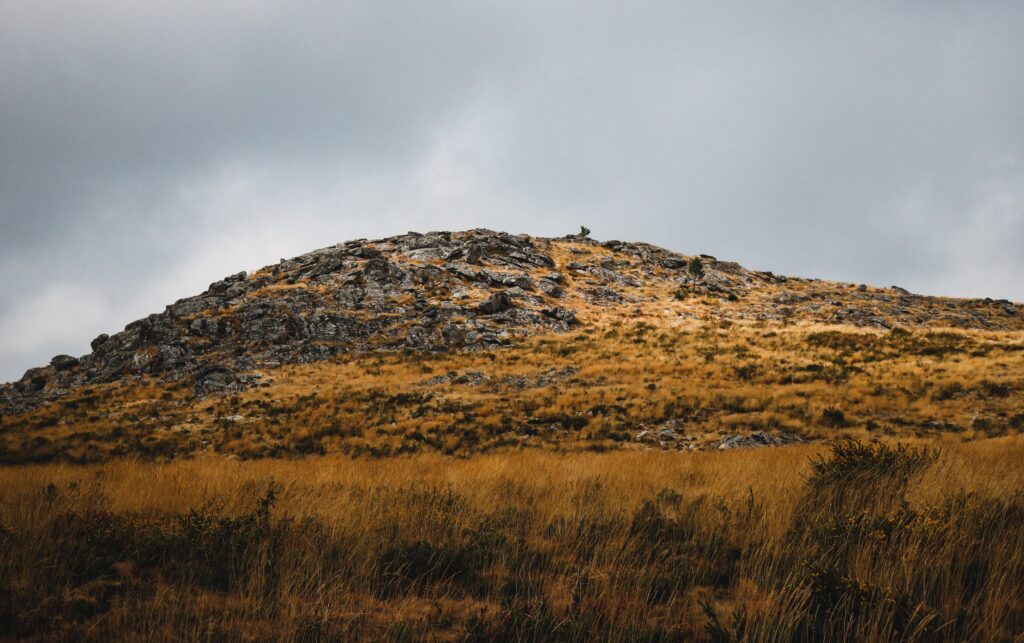
Part 1: Place Is Important | Part 2: Where the Killing Stops
Last time we saw God, whom I take to be the Father, order the Angel of YHWH, whom I take to be the Son, to stop the killing of plague victims as a consequence of David’s sin of numbering the people. In both of the accounts, the writer notes immediately that the angel was at a threshing floor owned by a man named Araunah (2S 24.16), or Ornan (1Ch 21.15). To us readers, it seems that God’s command was prompted in some way by the location.
What was it about this site that moved God to intervene with compassion? Why did the killing stop … here?
Well, this site has a history. It had a history in David’s day, and it has had a history ever since.
We first find it referred to by God himself, as “one of the mountains that I will tell you of” (Ge 22.2) in the land of Moriah. God chooses this hilltop as the place where he will ask Abraham for the ultimate act of obedience—the sacrifice of his own son, the son of his old age, the son of promise. As we all know, Abraham obeys, even tying Isaac on the handmade altar and taking the knife in his hand to kill him. The author of Hebrews tells us later what Abraham was thinking: that once he had killed his son, God would surely raise him from the dead (He 11.17-19)—because Isaac was, after all, the son of promise, the son through whom all the nations of the earth would be blessed. This faith is all the more remarkable in that in Abraham’s time, no one in history had ever been raised from the dead.
But he didn’t kill his son, did he?
Why not?
Because as he raised the knife, an angel—the Angel of Yahweh—seized his hand (at least metaphorically) and stopped him. In essence, he said, “No one is going to die here today.” And a substitute, a ram, served as the sacrifice instead (Ge 22.13).
Now, if my speculation is correct, the Angel who seized Abraham’s hand was the Son of God. And when that same Angel was killing in judgment on sin in David’s day, the Father reenacted the earlier scene by stopping his own Son.
These two accounts make a marvelous pair. But they still don’t answer our question: what moved the Father to stop the judgment? Surely the memory of Abraham’s faith wasn’t enough, was it?
As I noted last time, the Chronicles account ends with David saying that this spot would be where the Temple would be built (1Ch 22.1). And so it was. And for the next 4 centuries or so, Israel sacrificed to God there, and his glory filled the Temple (2Ch 7.1).
But eventually the Temple priests fell into apostasy, and the Lord withdrew from his Temple (Ezk 10.18-19). And then the Temple was destroyed (2Ch 36.19).
But it was rebuilt. And though there is no record that the visible glory of God returned to the new structure, God promised that he would make it far more glorious than Solomon’s Temple had ever been (Hg 2.7-9).
And after 4 more centuries—of silence—God began to move again.
A poor young couple brought their baby to the Temple to be circumcised, and a prophet spoke marvelous words about him (Lk 2.34-35). Twelve years later that same boy astonished the priests there with his words (Lk 2.46-47). Then the boy became a man and drove the moneychangers out of his Father’s house (Mt 21.12-17) and healed and taught there (Mk 12.35; Jn 5.14; 7.14; 8.20; 10.23; 18.20).
And then, one day, as hours of midday darkness lifted, the veil of the Temple was torn in two, from the top to the bottom (Mt 27.51), demonstrating that the way to God was open (He 6.19-20).
Why?
Because on another ridge of that same hill, the Son—the Angel who had stopped Abraham from sacrificing his son—gave himself as the perfect Ram, the substitutionary sacrifice for the sins of all mankind.
I wonder.
I wonder if the Father, knowing all that had happened, and would happen, on that threshing floor, was moved to reach out and stay the hand of the Son, the Destroying Angel, and say,
“The killing stops here.”
Indeed it does.
Photo by Hugo Teles on Unsplash


